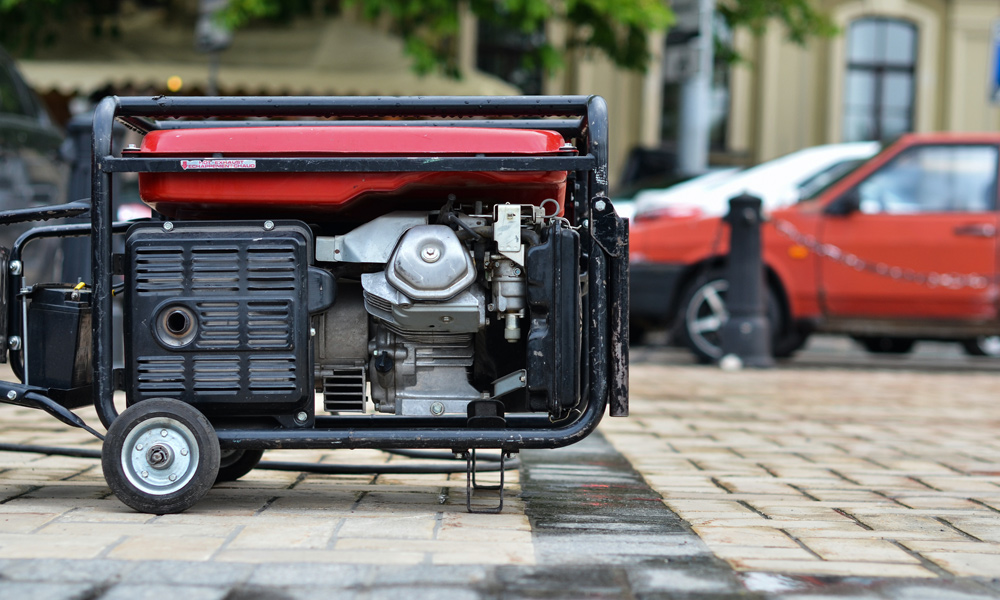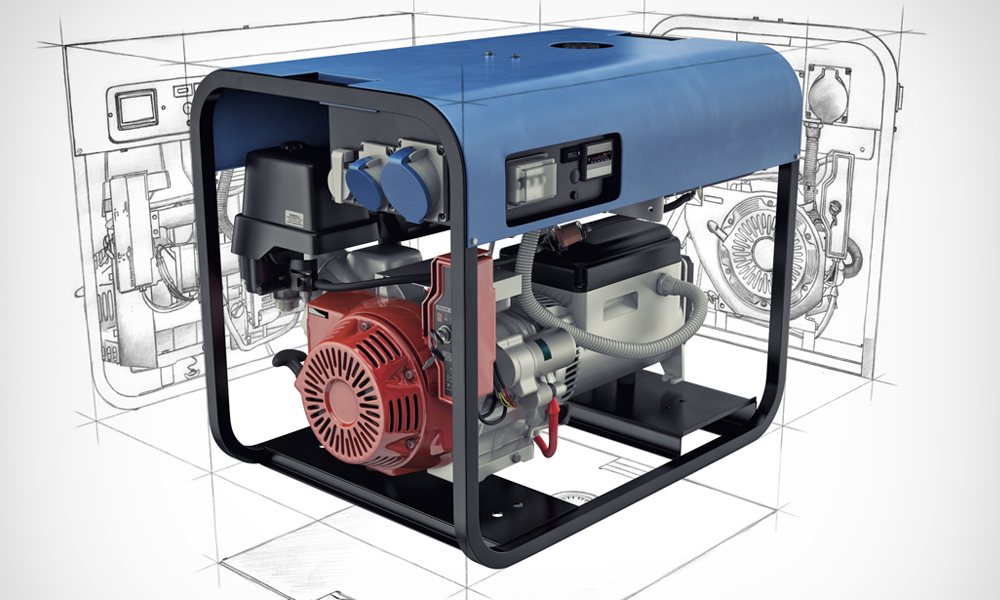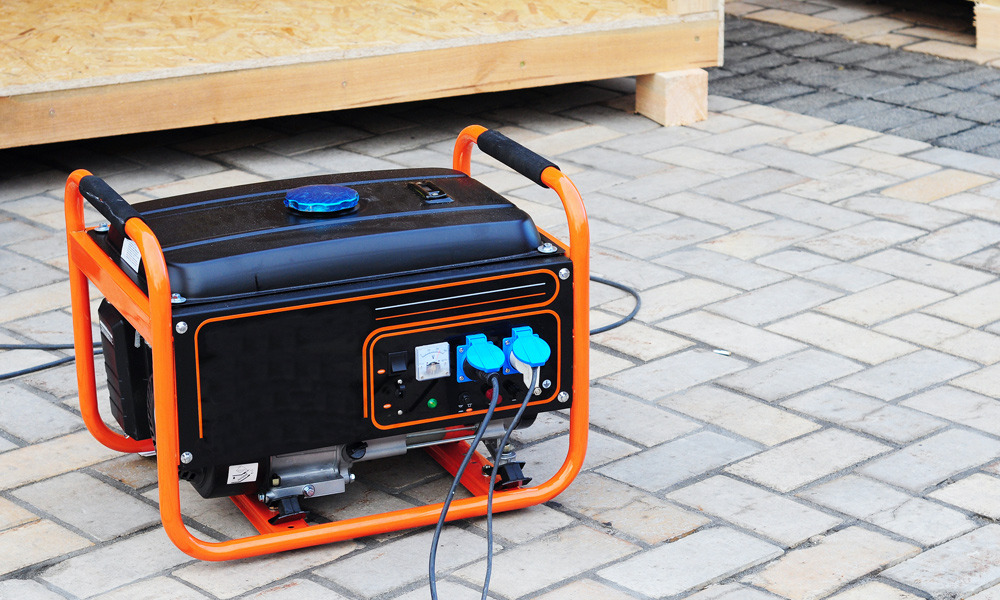How Does a Generator Work
 Electric generators are a valuable tool for many people. These standalone mechanical devices are a great source of backup power. They keep your appliances running when there’s no power available from your local electrical grid, either due to a power cut or a long-term issue with your local power supply. There are many different types of electricity generators available for use at the moment. These range from small-scale, portable generators (to provide power on camping trips and other outdoor, off-the-grid expeditions) to much larger industrial generators (used as backup power supplies for business and larger locations).
Electric generators are a valuable tool for many people. These standalone mechanical devices are a great source of backup power. They keep your appliances running when there’s no power available from your local electrical grid, either due to a power cut or a long-term issue with your local power supply. There are many different types of electricity generators available for use at the moment. These range from small-scale, portable generators (to provide power on camping trips and other outdoor, off-the-grid expeditions) to much larger industrial generators (used as backup power supplies for business and larger locations).
Generators can be used for almost any power generation purpose. Some generators run on different fuel types to create electrical energy from mechanical energy. Others run on natural gas, propane fuel, and bi-fuel combinations. But how do they actually work? What goes on inside generators?
Electric generators may look mysterious, but anyone can understand them if it’s explained clearly and concisely. Here at Best of Machinery, we’ve put together a simple introductory guide to how an electrical generator works to generate an electric current.
No matter how limited your starting knowledge may be, you can read on to learn everything you need to know about how generators work, from natural gas-powered generator models to small propane electricity generator designs.
Let us take a look at a few different types of electric generators and see how each one works.
How Does a Generator Generate Electricity?
A generator is an important source of electricity, but how does that electrical current happen? Some generators require fuel, while others use moving parts to generate power, but all of them have the same endpoint: the generation of an electrical current.
Let’s look at the various types of generators – from their fuel to their mechanisms – and explore how each one actually works in detail.
Mechanical and Electrical Energy Types
While you might think of generators as machines for creating electricity, they don’t actually technically create electricity at all. Instead, they convert other types of energy (such as mechanical energy or chemical energy) into the electrical energy you need for electric current.
A generator captures the power of moving parts by taking electrons from the source and forcing them into moving through an electrical circuit. Essentially, a generator works as a standard electrical motor but operates in the opposite direction. While a motor turns electricity into motion, a generator turns motion into electricity through a similar method.
The motion is brought into the generator through a moving part. This could be anything from a hand-cranked handle to a vast component like the water turbines in a full-sized hydroelectric dam. However, most smaller generators, like those found in homes and commercial environments, use fuel-burning to create the mechanical power they then use to create an electrical current.
Once the electrical current has been generated, it’s transmitted through systems of copper wire to wherever it needs to be. That could be nearby machines, your home, or even a much larger electrical system like your local power grid.
Modern generator designs have all developed from the original principle of electromagnetic induction, discovered by Michael Faraday. He determined that when a conductor is moved within a magnetic field, it creates an electrical charge. Simple generators just move a piece of wire around a magnetic field, directing the flow of electricity, a lot like how a pump can be used to push water through a pipe.
The Parts of an Electrical Generator
Generators have nine key components that are used to generate an electrical current from a fuel input. Let us run through all of them and explore what each is used for inside the generator itself.
The first major component is the engine. This supplies power to the generator, giving it the energy to transform into an electrical current. A more powerful engine allows the generator to generate more power. Next, mechanical energy is converted into electric currents by the alternator.
You might also see the alternator referred to as the “genhead.” It’s a component containing both stationary parts and mobile parts that work together to create the electromagnetic field a generator needs to create a flow of electrons and generate power. The fuel system is an important part of any generator. No matter what type of fuel is used to power the generator, whether liquid natural gas, propane, or diesel, it is a necessary element.
The fuel system comprises of: a fuel tank to hold the fuel itself, a fuel pump to move the fuel from the tank to the main body of the generator, a pipe that connects the tank to the generator engine through which the fuel can be sent, and a return pipe going back the other way. Most also include a fuel filter to remove debris from the fuel before it reaches the engine and an injector component that’s used to force the fuel itself into the combustion chamber, where it’s burned for use in the generator.

A generator will always include a voltage regulator to keep your electrical systems safe from overload and other problems caused by power fluctuation. This component controls the voltage of electric power produced and converts the current from AC power to DC power.
Generators create a great deal of heat when operational, just like any other engine. Therefore, they need a cooling system to prevent the device from overheating and an exhaust system to remove the waste fumes created while the generator is in use.
Generators contain an enormous number of small moving parts, and if any one of those is unable to move freely, this will create problems in the generator. That’s why every generator must include a lubrication system. This component applies engine oil to the mobile parts, keeping them smooth to use, protecting them from friction damage. Engine oil can run low just as fast as fuel when the generator is in use, so it must be topped up regularly.
A generator needs a little bit of electrical power to start it up. Every generator requires batteries and a battery charger to power it. Automatic battery chargers supply a continuous low power current to the battery, keeping it ready to go at all times, ensuring that you can always start up your generator when you need to.
Generators are controlled with a control panel. This manages every aspect of the generator, ranging from the power level it outputs and the amount of fuel used to how the generator starts up and how fast it runs. Many modern generator models can also automatically detect when the fuel begins to run out and can shut off the generator and start it up in emergencies.
The main body of the generator is commonly known as the frame or main assembly, and this is the part you can see. This exterior casing holds the other parts of the generator in place and protects it from impacts and other external sources of damage.
Generator Fuel Types
There are many different generator types on the market today. Many of these different generator models require different fuels. No one fuel can power all generators, so you need to know what type of fuel you need for your particular model before buying any. Most larger industrial generators run on diesel, while home generators use either propane or natural gas. Small, portable generators for personal use generally run on diesel, propane, or gasoline. There are other types, known as bi-fuel generators, that can run on gasoline and diesel fuels.
The fuel tank of the generator is where the fuel is stored. This system ensures that your generator has all of the materials it needs to create electric power through the internal combustion process, just like a car engine. The fuel combusts, creating mechanical power, and the generator then converts that into electric currents. The fuel is usually stored near the generator, making it easy to get it up and running when needed.
Sometimes this means that storage tanks are mounted directly on the generator casing, but sometimes they’re separate units stored nearby. Larger generators need more fuel, so they require larger tanks to draw from. These could be located above ground, below ground, or sub-base (above the ground but below the base of the generator) if they are relatively small. Most higher capacity tanks for larger generator models are stored above or below ground, and both of these options have advantages and disadvantages, with no clearly better option.
Combustion engines burn fuelling components, which creates waste gas and heat. This requires cooling systems to prevent the generator from overheating, as high heat can melt tubes and damage wire coatings. Most small generators use simple fan systems to reduce heat, just like a computer, but larger generator models require bigger and more complex coolant systems. Many generator types use hydrogen as a coolant, as this is a very efficient and powerful cooling method.
Some larger generators use water-based coolant systems, but water cooling systems are very large. Only the largest and most powerful models of generator use this system; most smaller generator types use more compact options for cooling.
Generator Maintenance
Just like any other engine, a generator requires routine maintenance to keep it running smoothly at all times. It’s very important to make sure that your generator is well maintained. There’s nothing worse than encountering a crisis where you really need a generator and discovering only then that your generator isn’t working properly, leaving you without power.
The manufacturer of your generator should recommend a maintenance plan. But if that’s not the case, make sure your regular scheduled maintenance includes the inspection and replacement of any worn components, the checking and topping up of substances such as fuels and coolants, battery cleaning, filter replacement, full load testing, and control panel inspection, lubrication, and cooling system tests.
If you make sure your generator is well maintained and you keep a full log of repairs (so you can check when a component was last replaced and therefore when it’s likely to need replacement next), your generator should be able to last you for years, if not for life.
 How Does a Generator Hook up to your House?
How Does a Generator Hook up to your House?
Attaching a generator to your house is easy if you follow the appropriate safety procedures and be patient. Remember that you should never plug your generator directly into your electric system panel! First, you need to get together all the supplies you need to attach your generator to your house. That means a breaker interlock kit chosen to fit the specific model of generator you’re trying to set up, a 30 amp 2 pole double breaker, at least 10 feet of wire, a 30 amp power inlet box, an electric conduit and fittings, waterproof glue, and a reliable 30 amp generator extension cord.
Next, you need to drill an access hole in the wall of your home. Try to get your conduit access hole close to your home breaker panel but some distance away from the generator itself. Remove the cover from the front of the power inlet box, knock out one of the knock out components, and attach the fitting in the space. Ensure this is watertight, and then use Tapcons to attach your power inlet box to the wall of your home. Next, cut your conduit to length. Make sure it’s the right length to stretch between the inlet box and the access hole in the wall without any gaps through which water could get into the system.
When it’s the right length, and you’re happy with it, glue it into place along the wall. Once the glue is fully dry, you can start on the wiring. Remove the conduit cover and pull the wires through one at a time, making sure you attach each one to the plug as you go, using a large screwdriver to tighten up the terminals. Then, push the other end of the wires through the conduit and into your house, again one at a time.
Replace the conduit cover, and seal up any gaps with silicone or expanding foam to ensure that the conduit is firmly attached to your wall.
Prepare your main breaker box by switching it off. That includes the main power breaker as well as all the branch breakers. Remove the front panel of the breaker box, and screw in a conduit adapter to one of the knock out ports. Pull all the wires in through the conduit and into the box.
For the next step, you’ll need a space at the top right of the breaker box. If there isn’t already space, you’ll need to move some of your breakers to make space. Then, install your new breaker. Bolt a retainer over the top to make sure nothing can slip out of place.
On the inside of your breaker box cover, you will need to drill a number of holes and use those to install the interlock bolts. Then, you can return the cover to the breaker box and turn the breakers on. Leave a 5-second delay between breakers to ensure that you don’t overload the system on start-up.
Conclusion
Generators are relatively simple devices. No matter what the power source for your generator is, it will run pretty much the same as a motor but in reverse. In any generator, mechanical power is converted into electric power, just as a motor converts electric power into mechanical power.
While different types of generators might look very different on the surface, they’re actually all remarkably similar on the inside. This is because all generators operate on the same principles. The guide to how generators function above applies to every generator you might encounter, no matter how large or small a model it might be.